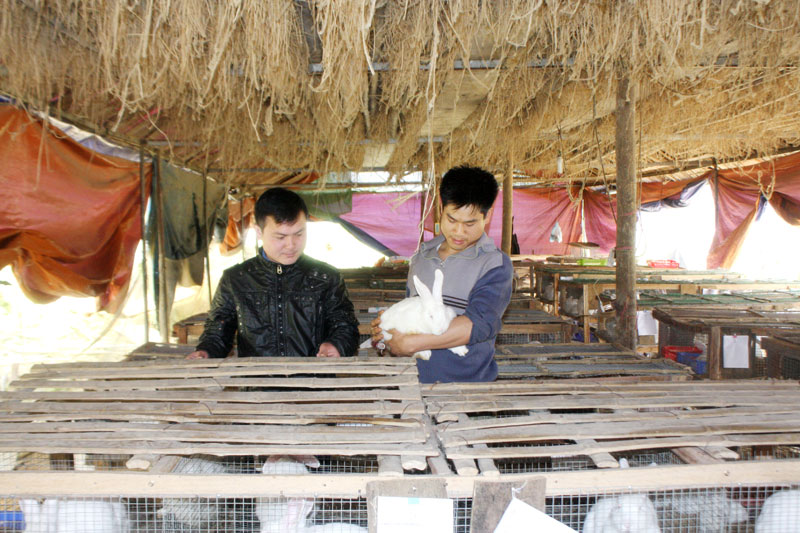



The new model of breeding New Zealand white rabbits initially brought success to Mr. Bui Van Hau (right), Bieng village, Quyet Chien commune (Tan Lac).
We had a chance to visit the model of raising New Zealand White Rabbits of Mr. Bui Van Hau's family, Bieng village, Quyet Chien commune. In 2016, during a visit to his friend in Thai Binh, he was taken to visit the model of raising New Zealand White Rabbits, Mr. Hau was "fallen in love" with this gentle looking animal.
With the advantage of fast laying, each year a rabbit lays between 5-7 litters, each litter has an average of 6-8 babies so the number of rabbits of his family has increased quite rapidly. Currently, there are over 300 rabbits, including 50 sows. "For people who has a small budget would find that investing in rabbit is quite suitable, the cost to buy a pair of breeding rabbits is only VND 200,000 - 250,000. The cages are quite simple, each cage costs average about 100,000 VND, depending on their material. Throughout the breeding period, I noticed that this is a very non - risky breeding animal but fast-paced breeding and available food sources" Mr. Hau added.
Throughout the visit and study, we were really impressed with this model of "working as playing, real earning". At present, there are quite a lot of rabbits breeding, there are soem rabbits to give birth to 10 small rabbits. After 3 - 4 months of taking care, these small rabbits will gain the weight of over 4 kg, with the current selling price of 80,000 - 90,000 VND / kg, each rabbit will bring in a considerable income and a litter will earn about millions VND. According to Mr. Hau, New Zealand rabbits grow best in the temperature of 17 - 250C, although they are omnivorous, their food must be dry, if the food is sticked with a little fog or rain, the rabbits will get some diseases of digestions. In addition to increasing the herd to over 300 rabbits, Mr. Hau sold over 200 commercial rabbits and breeding rabbits. "At present, I have found the output for mass product, therefore, in the upcoming time, I continue to replicate the model to get higher economic efficiency, "said Hau.